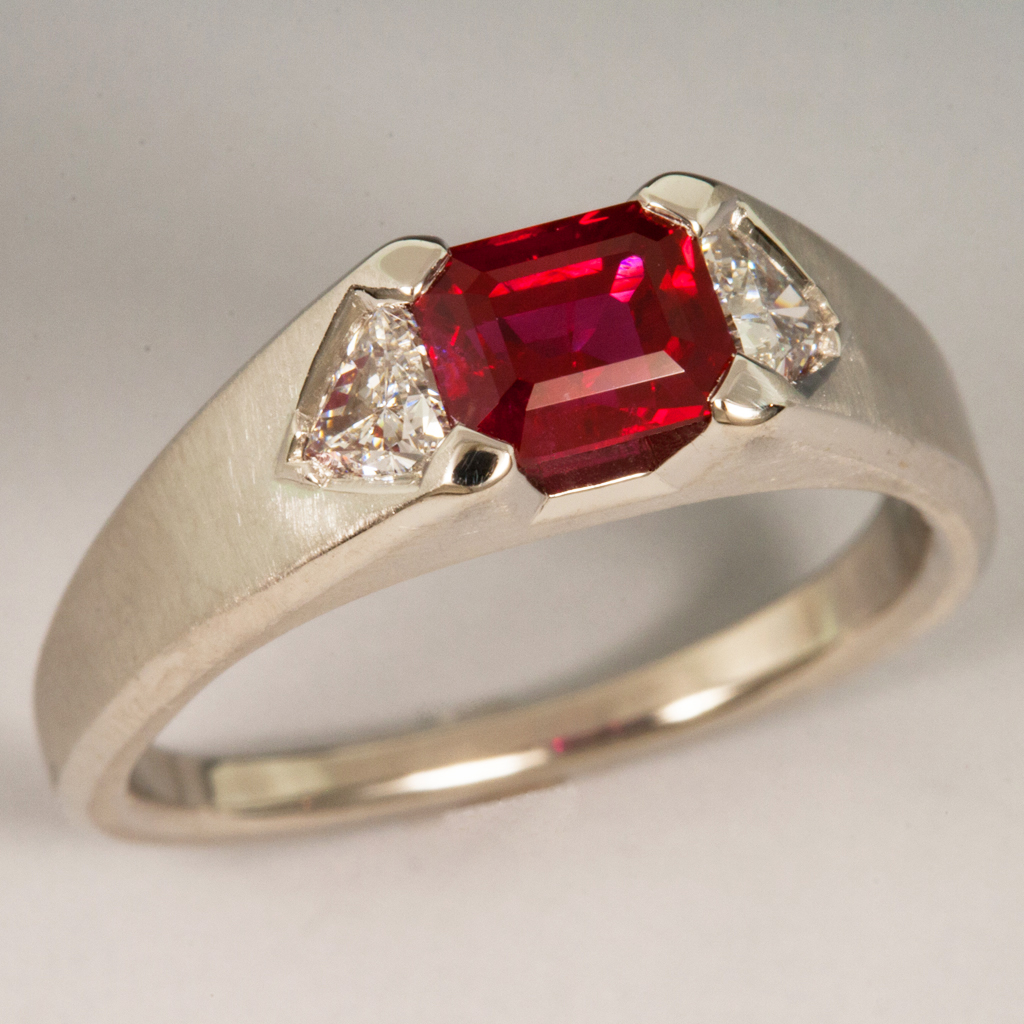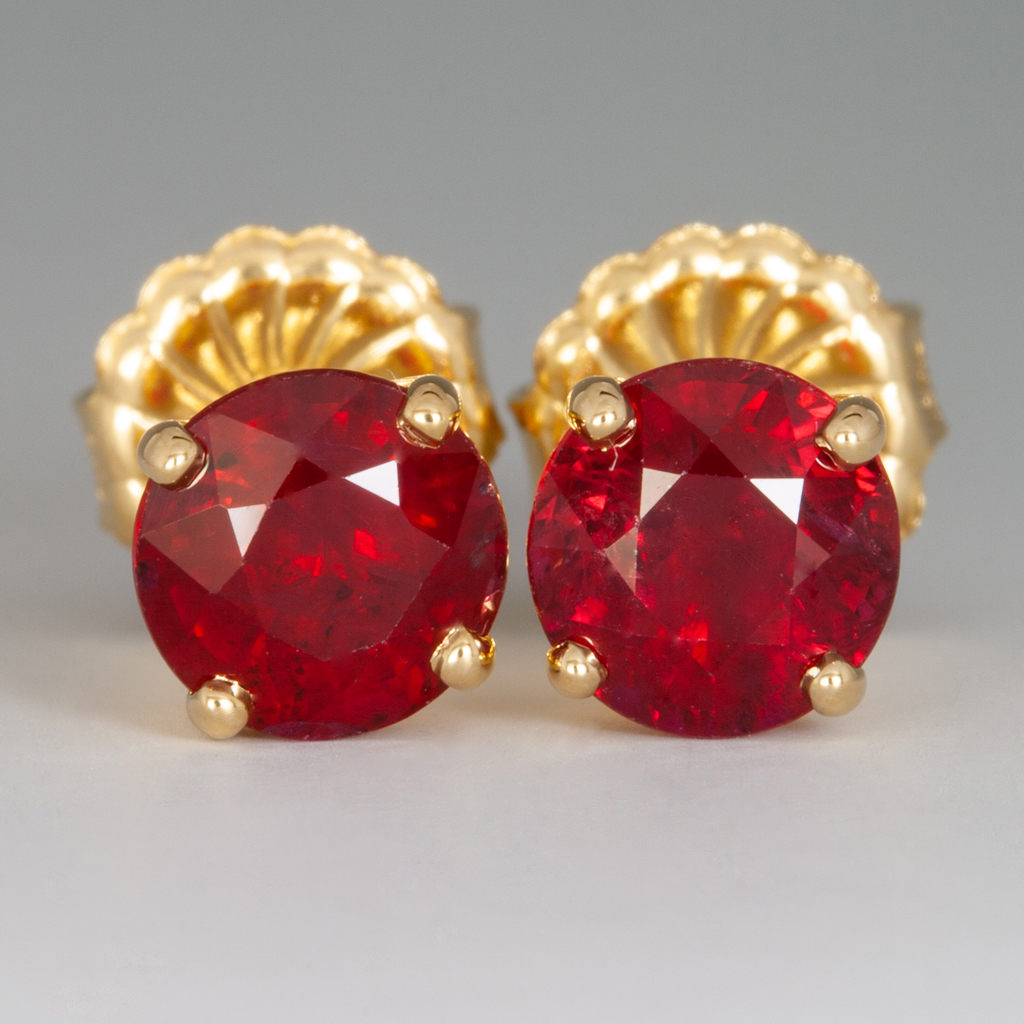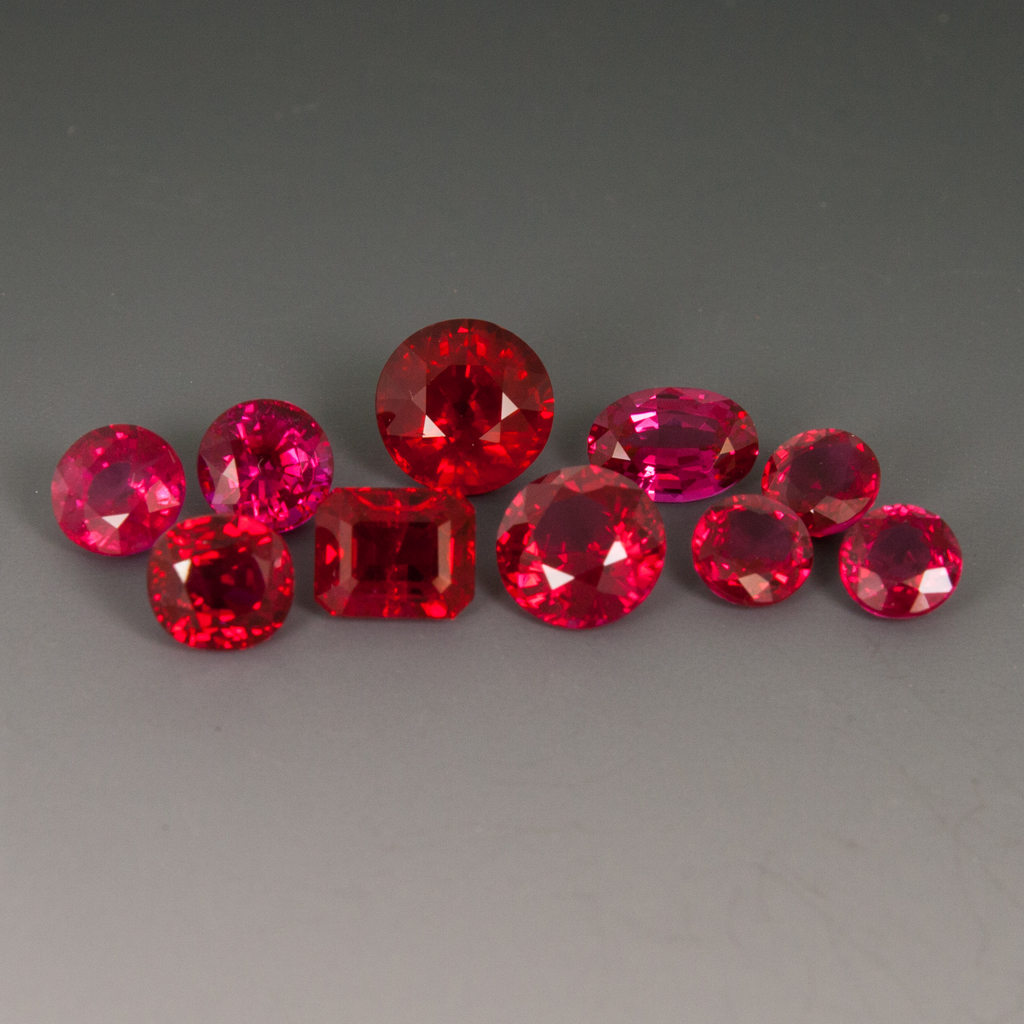
Ruby, Emerald Cut, 5.66 x 4.57mm, 1.02ct. (H)
Diamonds, Trillion Cut, 4.0mm, .25ctw EF/VS matched pair.
Carved by hand and cast in platinum to perfectly accommodate the gems.
Engraving all around the gems makes them sing!
Trapezoidal-shape for an ergonomic fit and feel.
Satin finished platinum with highly polished beveled edges.
Exquisitely handcrafted.
Size 6.





